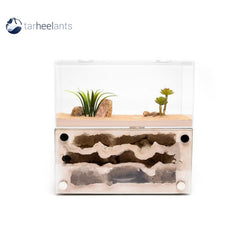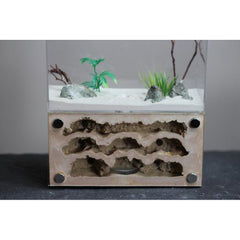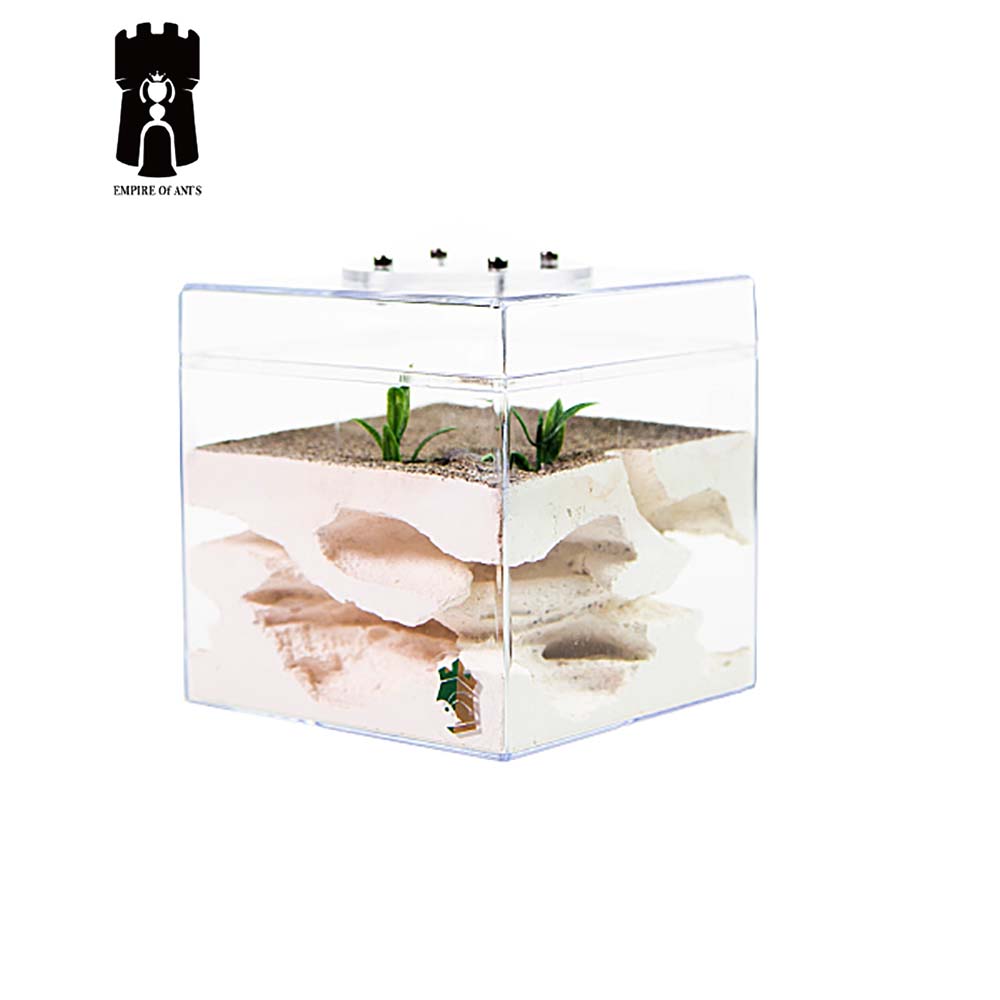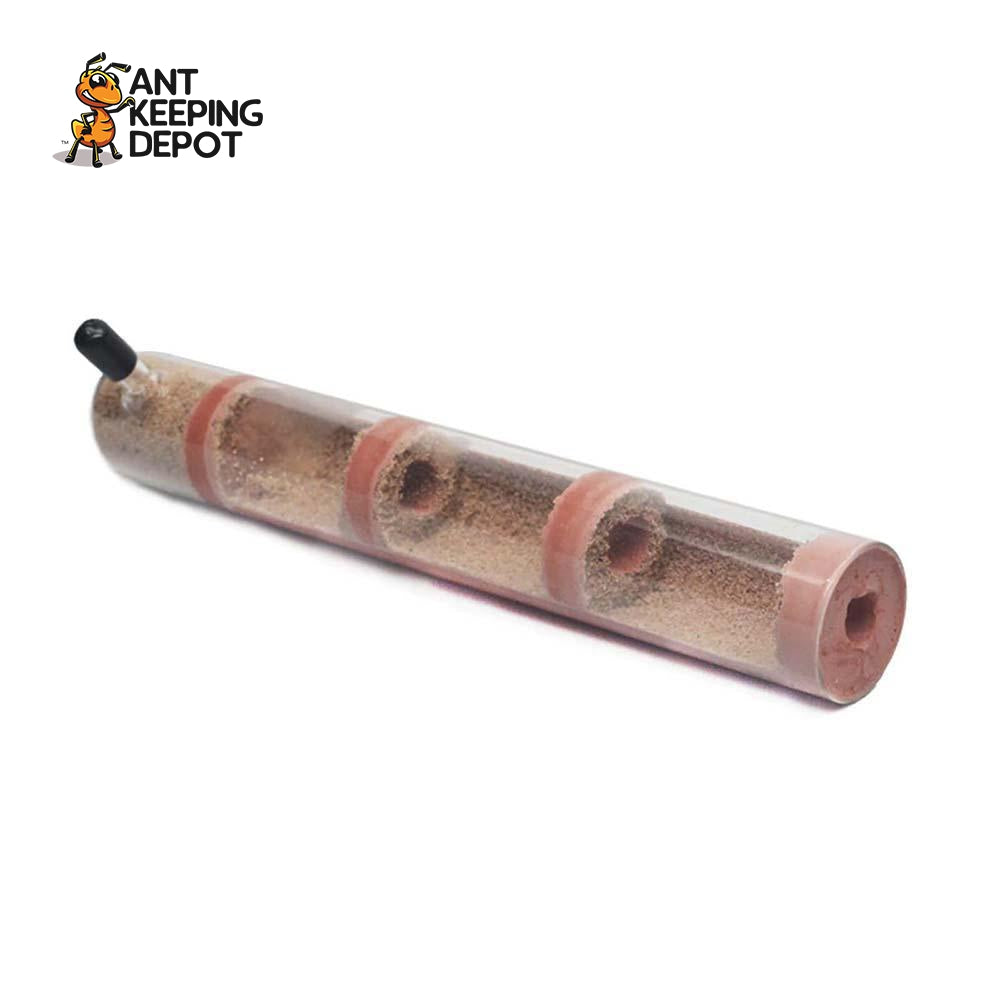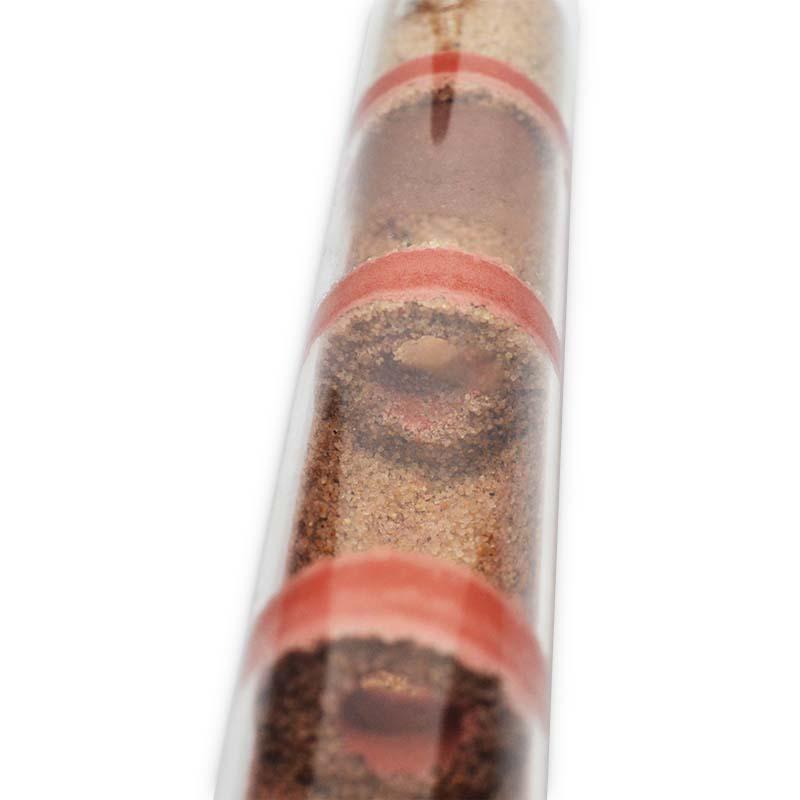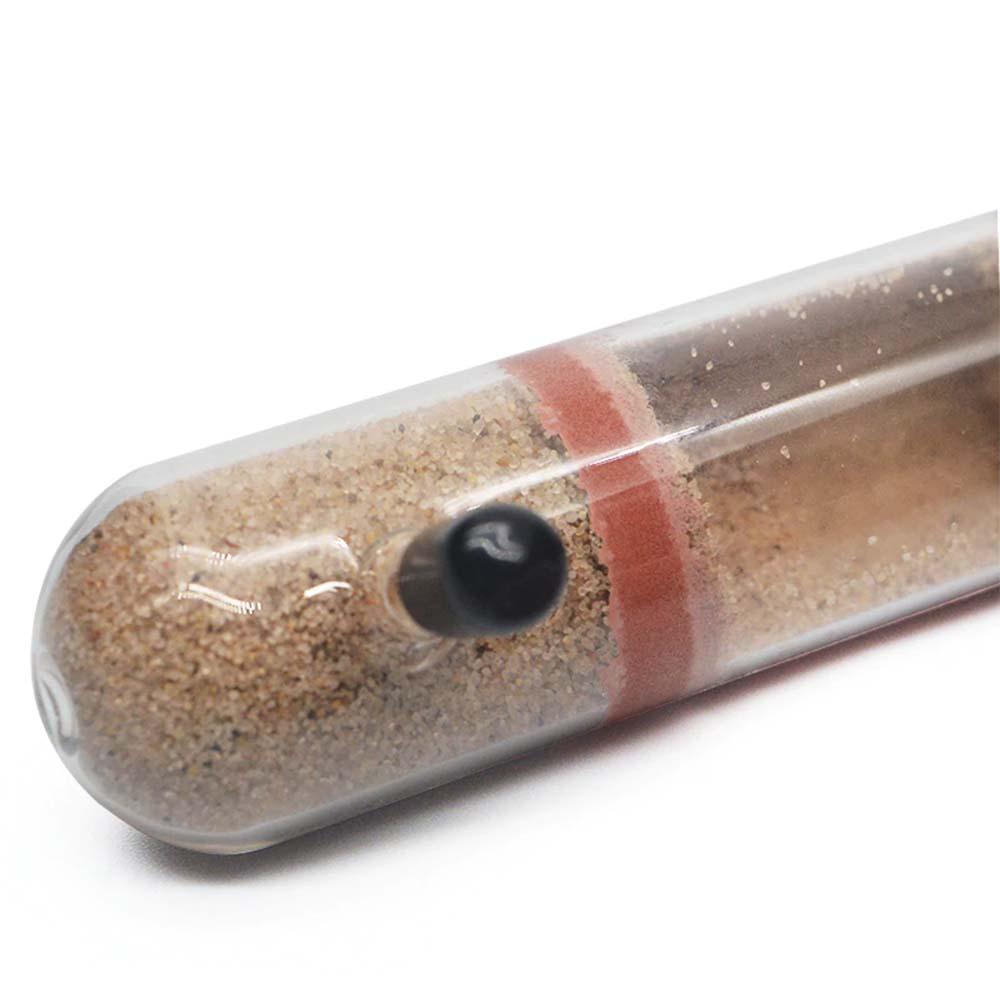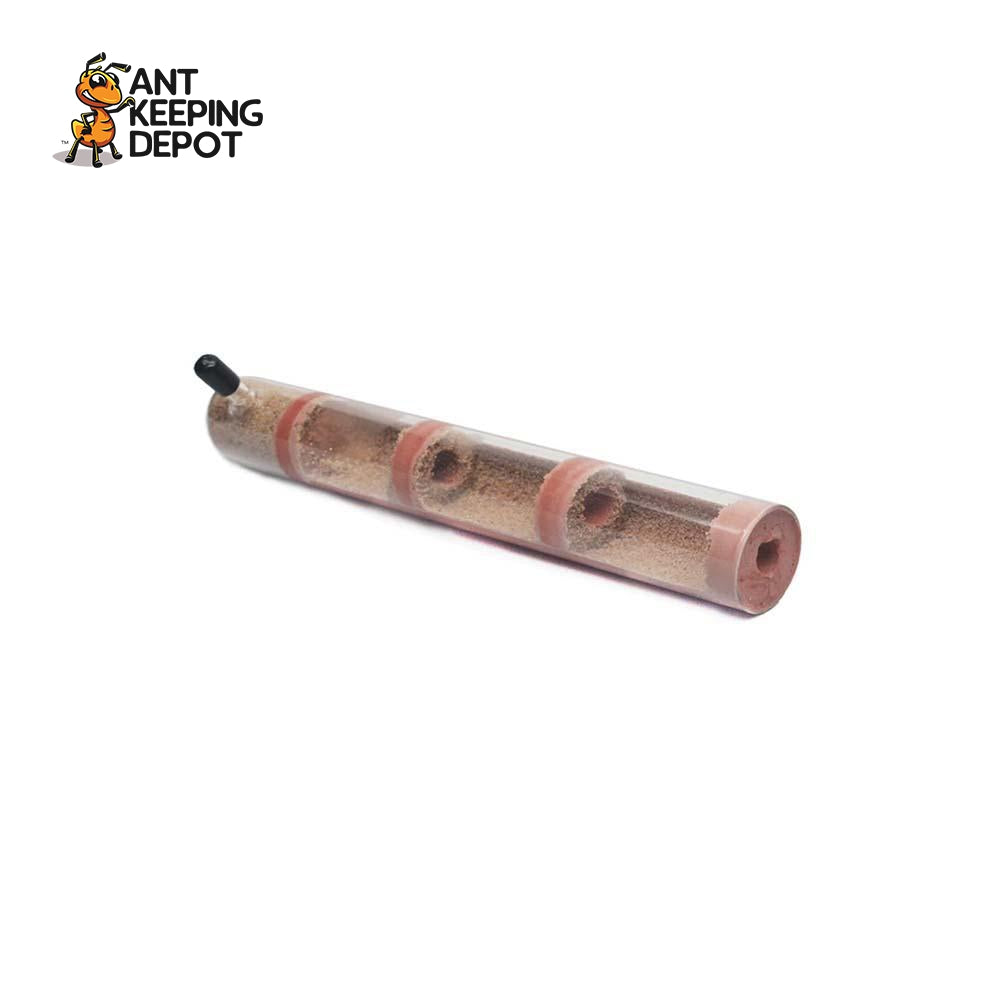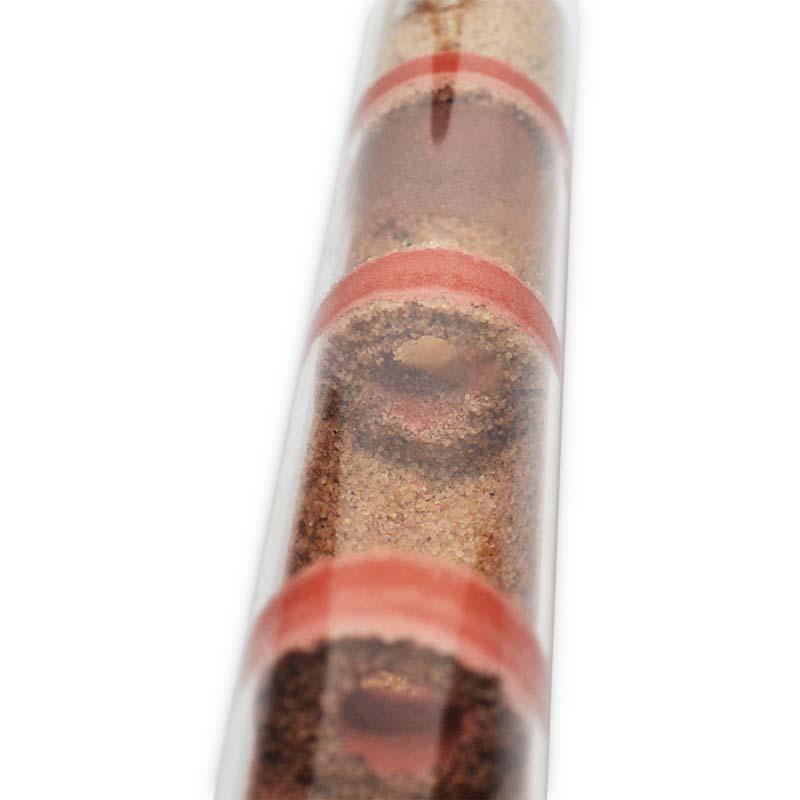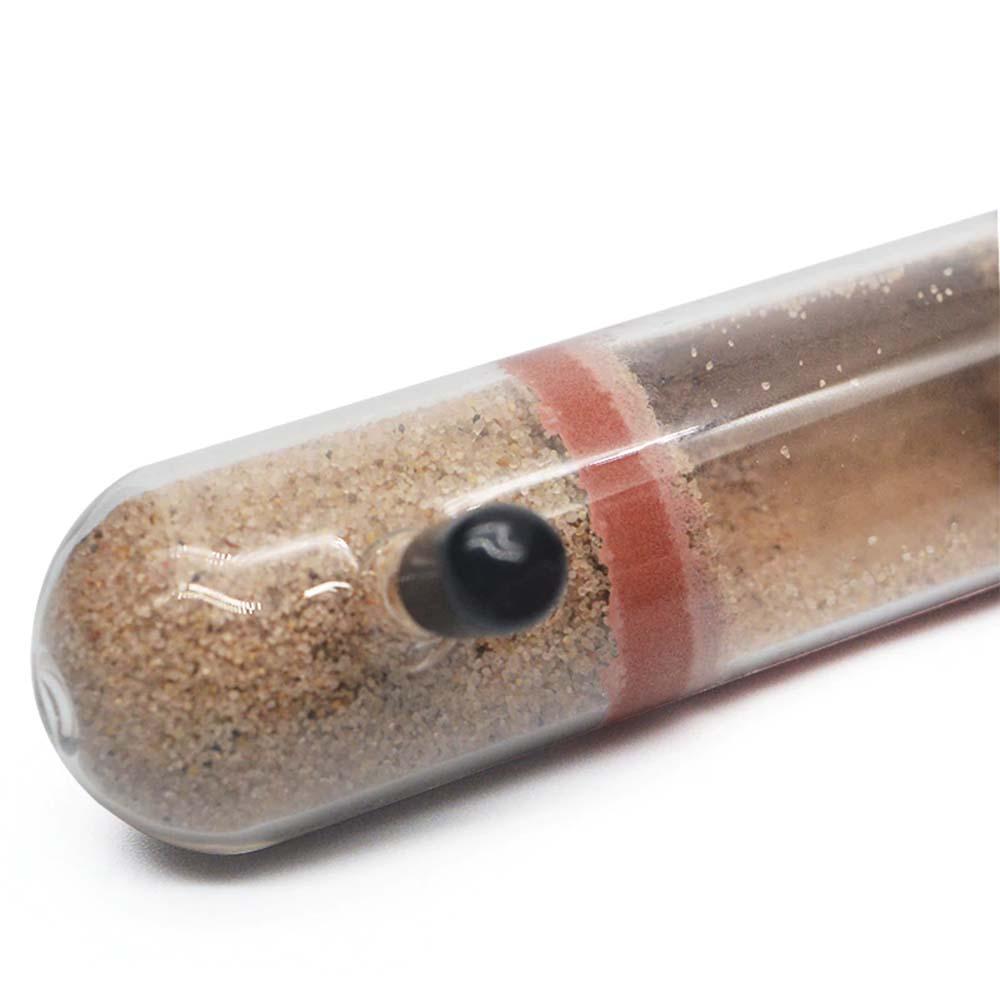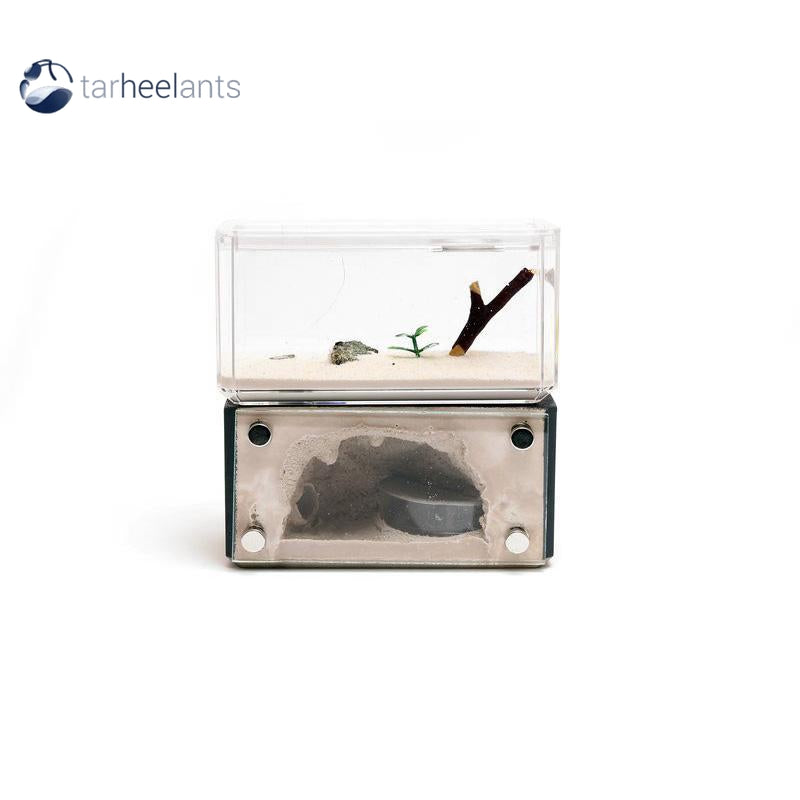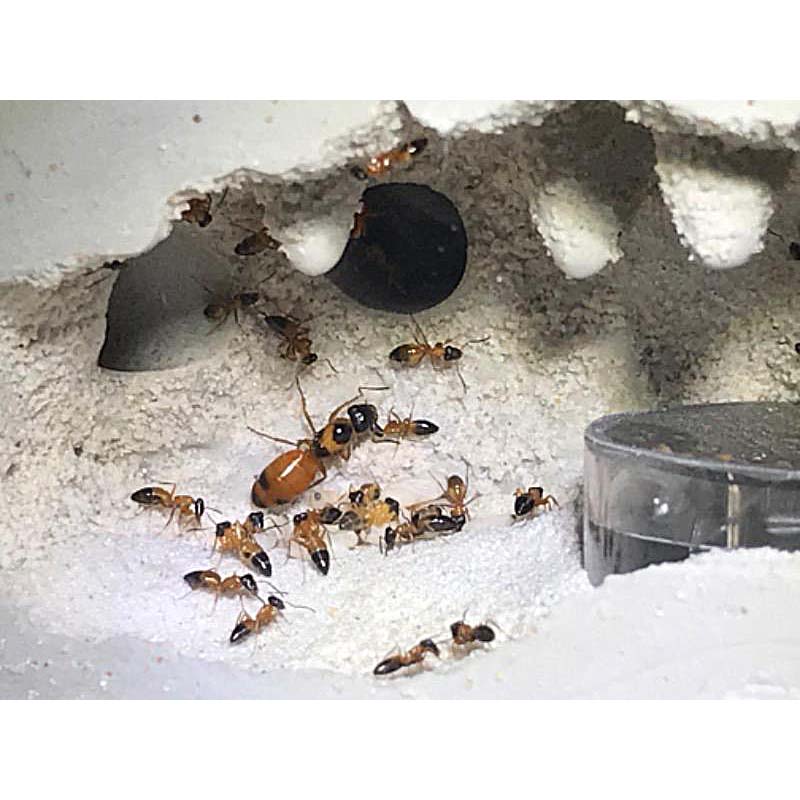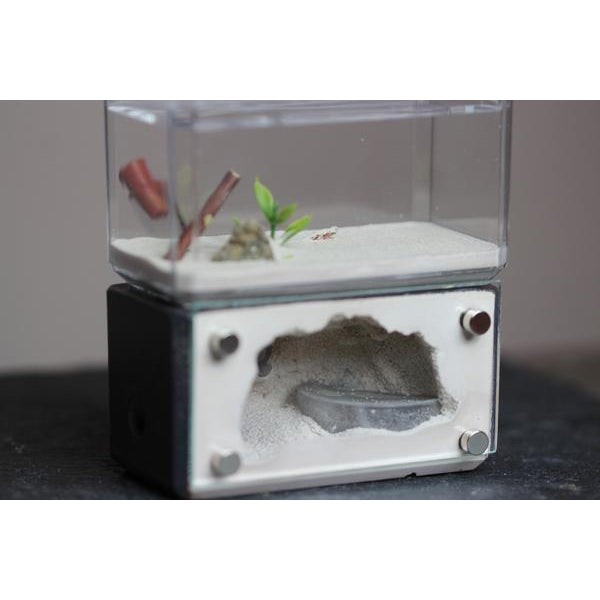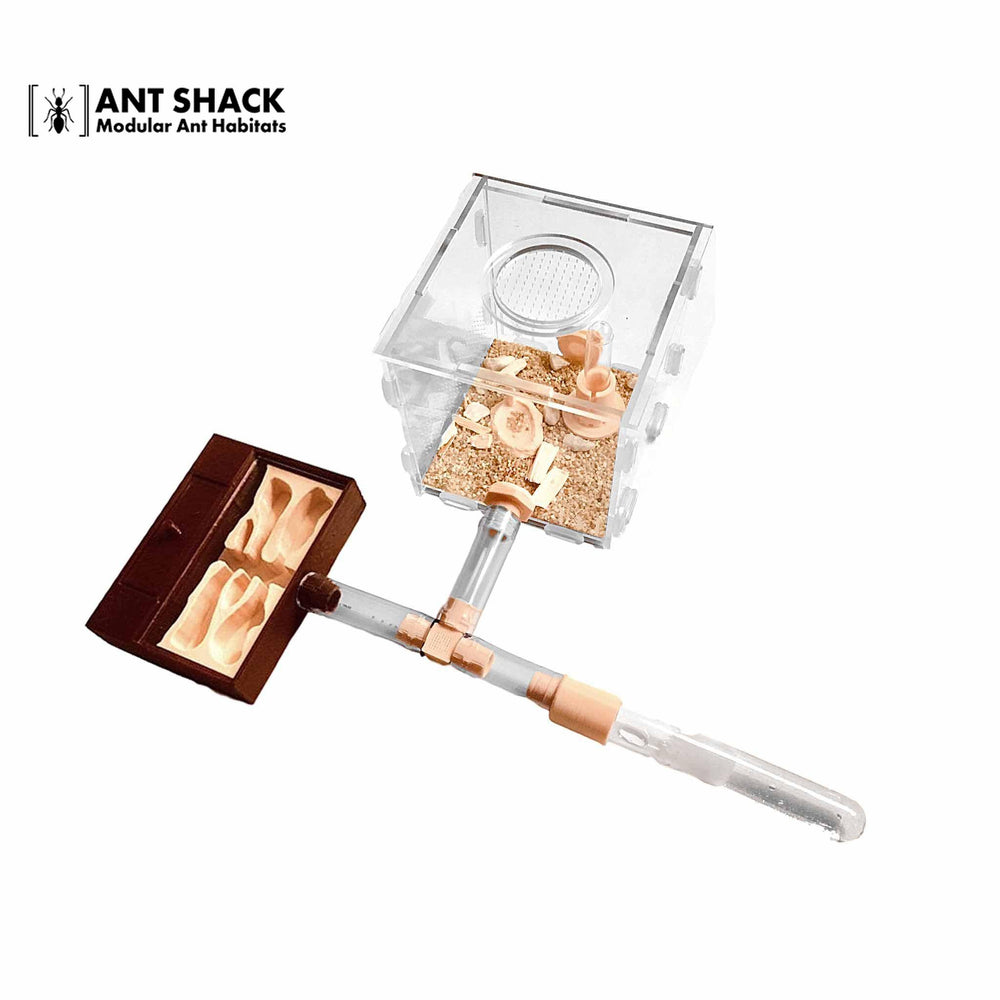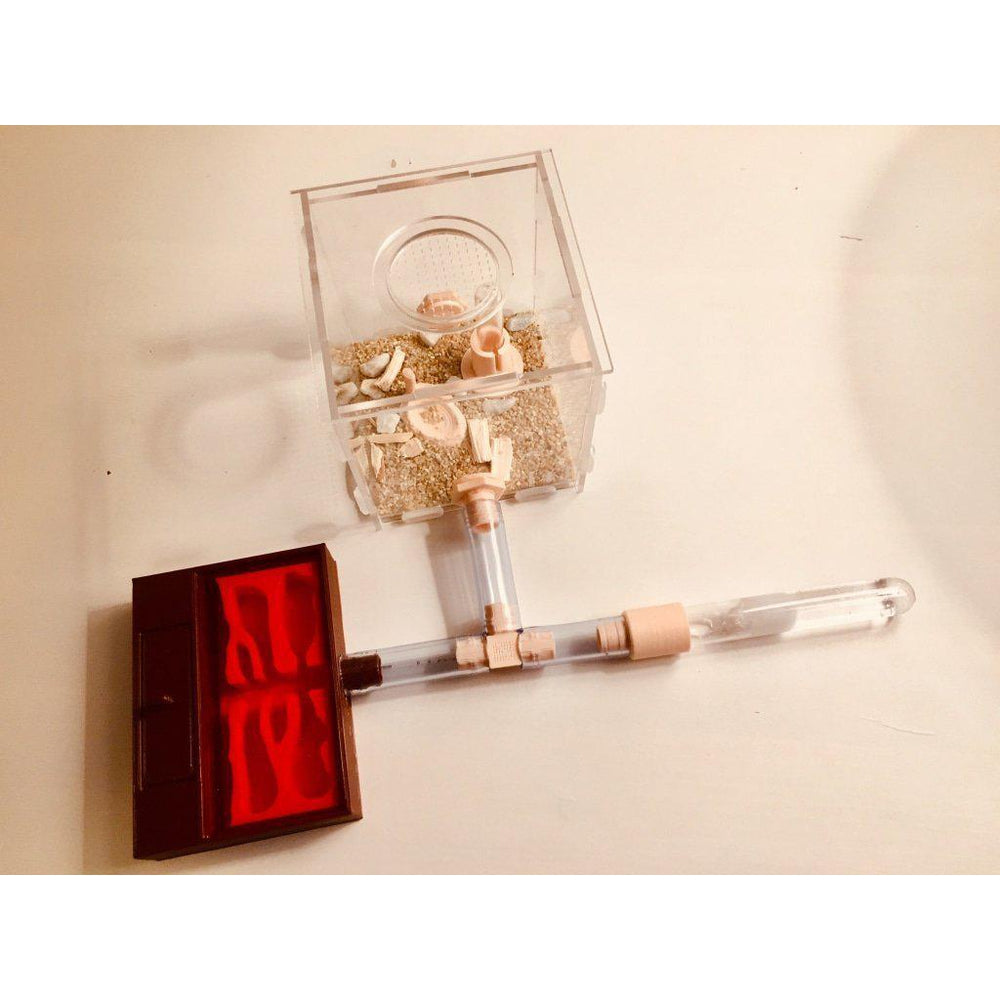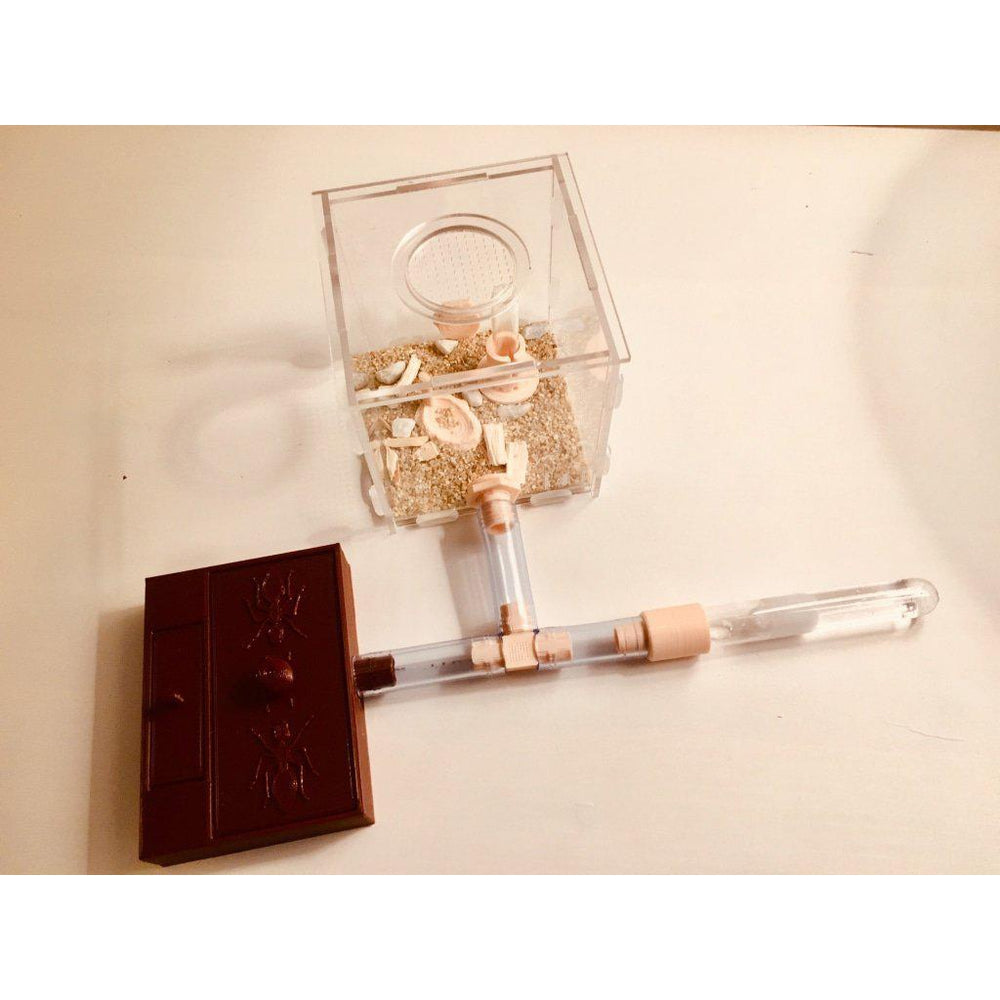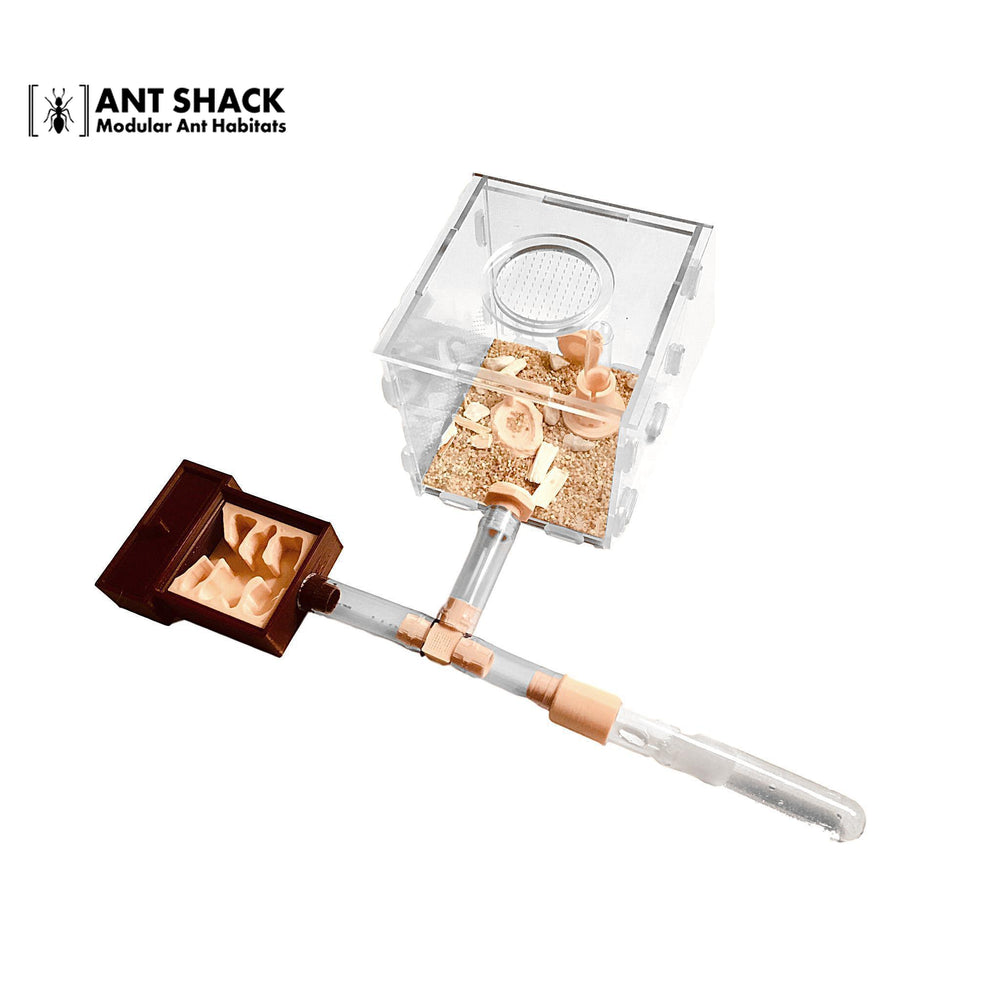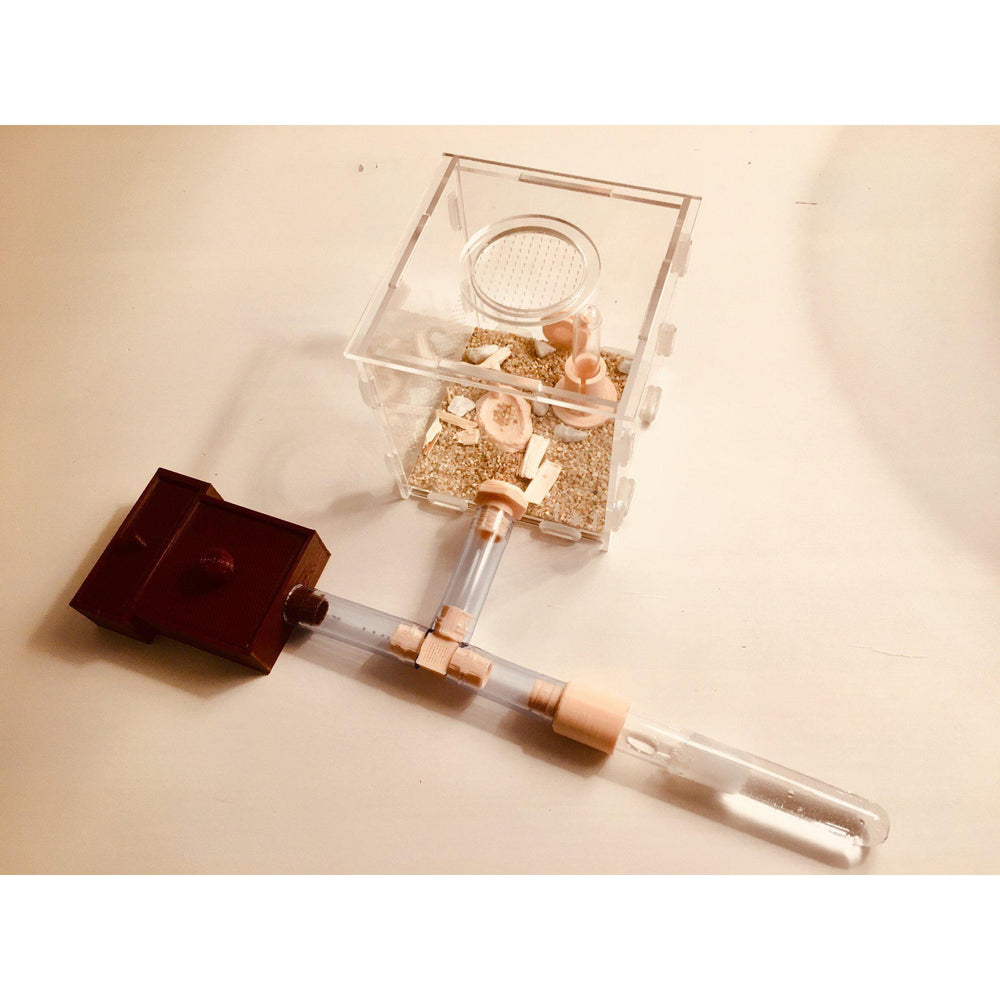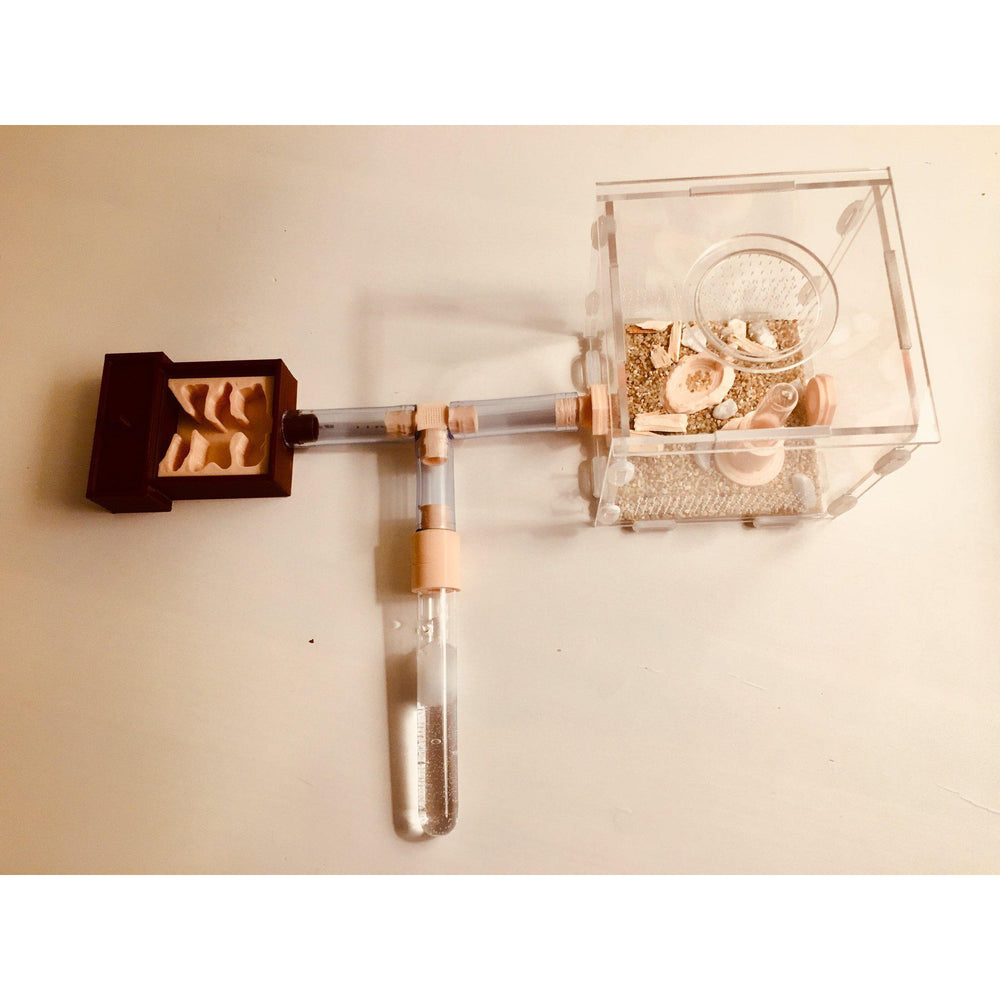Tar Heel Ants Nucleus Type III
Image should be used as a guide only. These formicariums are handmade and each is unique.
Species Size: Medium
Foraging Themes: Grassland/Savannah
Glass Type: Standard Glass
Side Panel Color: Gray
Removable Vent: No
Box Type: Standard Acrylic Box
Tunnels: Flush with glass
The Nucleus is a double-sided formicarium from Tar Heel Ants. The Nucleus formicaria have a number of features that make them different than other formicaria products. Features such as a two-sided nest, removable glass panels on both sides, substrate-coated chambers, nestmates watering system and water towers, magnetically detachable foraging area, and professionally carved Ytong nest make the Nucleus unique. This nest is recommended for all species and sizes of ants.
The Nucleus Type III formicarium is made of our Type III material which is better at preventing ants from tunneling into the nest material. Type III material is a much better defense against pesky ants! This is only a problem with larger colonies in most cases. The large water towers included in the Type III Nucleus are sure to please those who have demanding schedules that require some time away from home!
Features:
- Nest Block Size 100mm x 200mm x 100mm
- Foraging Area Size 100mm x 200mm x 100mm
- 3 Large Water Towers (2 on one side, 1 on other)
- Opposite sides connected by access tunnels (allows sectioning of this formicarium)
- Acrylic friction-fitting lid for foraging area
- Magnetically removable foraging area
- Stainless steel mesh vent
- 2 nestmates.What is a nestmate? Click hereto find out.
- Magnetically removable glass
- Sand-coated chambers giving your ants multiple surfaces for the various stage of development.
- 12.5mm side entry port for connection to other habitats












